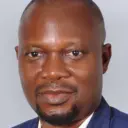Ecowas and UN teams to assess Burkina Faso's situationpublished at 04:33 GMT 31 January 2022
 Chris Ewokor
Chris Ewokor
BBC News
 Image source, AFP
Image source, AFPThe joint team will hold talks with military leaders and other Burkinabè actors
A team from the West African regional bloc Ecowas will be in Burkina Faso's capital, Ouagadougou, on Monday to assess the situation in the country.
It comes a week after some military officers toppled the government of elected President Roch Kaboré.
The Ecowas ministerial-level mission will be joined by a UN delegation led by the head of the UN's office for West Africa and the Sahel, Mahamat Saleh Annadif.
The joint team will hold talks with the Lt Col Paul-Henri Damiba-led junta, as well as various Burkinabè actors.
An in-person Ecowas summit is planned for Thursday in Ghana for further deliberations on the situation.
Leaders of the regional body held a virtual emergency meeting on Friday where they suspended the country’s membership from the regional bloc.
There appears to be a troubling resurgence of coups in West Africa, with Burkina Faso being the third country after Mali and Guinea in the past year.
You may be interested in:
